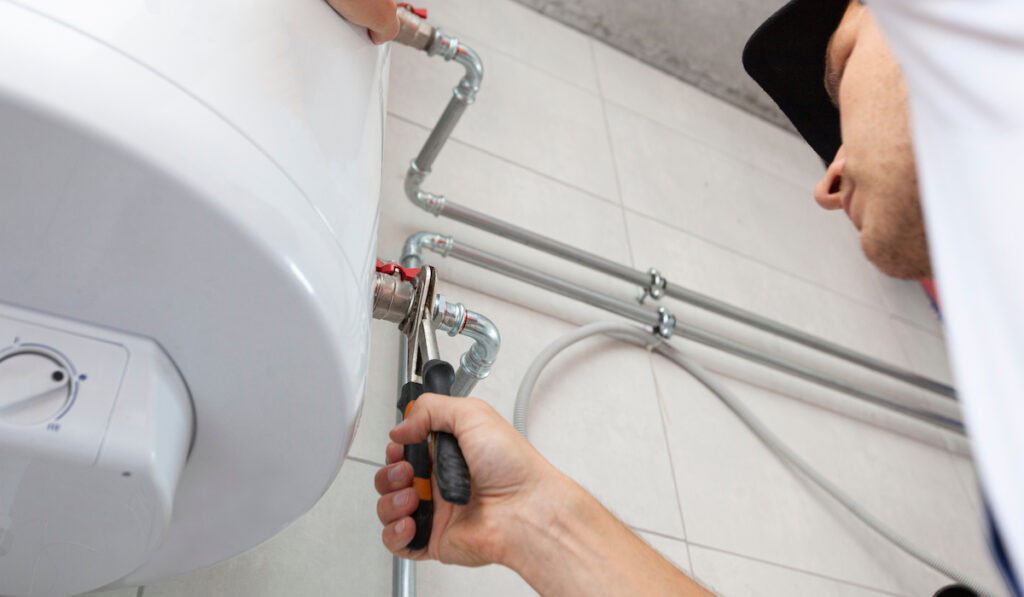How to Properly Care for Your Home's Hot Water System
How to Properly Care for Your Home's Hot Water System
Blog Article
Have you been looking for advice around How to Maintain Your Water Heater & Prolong its Life?

Warm water is crucial for day-to-day convenience, whether it's for a refreshing shower or washing recipes. To ensure your hot water system runs effectively and lasts longer, routine upkeep is essential. This write-up supplies sensible suggestions and understandings on how to keep your home's hot water system to stay clear of disruptions and pricey fixings.
Intro
Preserving your home's warm water system may appear complicated, but with a couple of straightforward actions, you can guarantee it operates efficiently for years to come. This guide covers every little thing from comprehending your hot water system to do it yourself maintenance suggestions and recognizing when to hire specialist help.
Importance of Keeping Your Warm Water System
Regular upkeep not only extends the life-span of your hot water system yet additionally guarantees it runs efficiently. Overlooking upkeep can cause reduced efficiency, greater power costs, and even premature failure of the system.
Signs Your Hot Water System Demands Upkeep
Understanding when your warm water system needs interest can avoid major issues. Keep an eye out for indicators such as irregular water temperature level, strange sounds from the heater, or rusty water.
Comprehending Your Warm Water System
Prior to diving into maintenance tasks, it's handy to understand the standard parts of your hot water system. Commonly, this includes the hot water heater itself, pipes, anode poles, and temperature controls.
Month-to-month Upkeep Tasks
Routine month-to-month checks can help catch minor issues prior to they rise.
Purging the Hot Water Heater
Purging your hot water heater gets rid of sediment build-up, improving efficiency and lengthening its life.
Monitoring and Replacing Anode Rods
Anode poles stop rust inside the container. Inspecting and replacing them when broken is important.
Examining and Adjusting Temperature Setups
Adjusting the temperature setups makes certain optimal performance and safety.
DIY Tips for Upkeep
You can perform a number of upkeep tasks yourself to keep your hot water system in leading condition.
Looking for Leakages
Routinely examine pipelines and connections for leaks, as these can cause water damage and higher expenses.
Examining Pressure Alleviation Valves
Examining the stress relief valve ensures it functions appropriately and stops too much pressure accumulation.
Insulating Pipelines
Insulating hot water pipelines lowers warmth loss and can save energy.
When to Call an Expert
While DIY maintenance is useful, some problems require professional know-how.
Facility Issues Needing Specialist Help
Instances include major leakages, electrical troubles, or if your water heater is continually underperforming.
Routine Professional Upkeep Conveniences
Professional maintenance can include comprehensive examinations, tune-ups, and making sure compliance with safety and security standards.
Conclusion
Normal upkeep of your home's warm water system is necessary for efficiency, long life, and cost savings. By adhering to these suggestions and understanding when to seek professional aid, you can ensure a reliable supply of warm water without unexpected disruptions.
How to Maintain an Instant Hot Water Heater
Before tinkering with your hot water heater, make sure that it’s not powered on. You also have to turn off the main circuit breaker and shut off the main gas line to prevent accidents. Also turn off the water valves connected to your unit to prevent water from flowing into and out of the appliance. 2. When you’re done, you have to detach the purge valves’ caps. These look like the letter “T†and are situated on either side of the water valves. Doing so will release any pressure that has accumulated inside the valves while at the same time avoid hot water from shooting out and burning your skin. 3. When the purge valves’ caps are removed, you have to connect your hosing lines to the valves. Your unit should have come with three hoses but if it didn’t, you can purchase these things from any hardware or home repair shops. You can also get them from retail stores that sell water heating systems. Read the user’s manual and follow it to complete this task properly. When the hosing lines are connected, open the purge port’s valves. 4. You should never use harsh chemical cleaners or solutions when cleaning your unit. Make use of white vinegar instead. It should be undiluted and you’ll probably use about 2 gallons. 5. Now flush your water heater. This task should probably take about 40 minutes. We can’t give you specific directions for this because the procedure is carried out depending on the type, model and brand of your heater. With that being said, refer to the user’s manual. 6. When you’re done draining the unit, you have to turn off the purge port valves again. Remove the hosing lines that you earlier installed on each of the water valves. Put the valve caps (purge port) back in their respective places and be very careful so as not to damage the rubber discs that are found inside these caps. 7. Now that everything’s back in place, check your user’s manual again to find out how to reactivate your water heating system. 8. Once it is working, turn one of your hot water faucets on just to let air pass through the heater’s water supply pipes. Leave the tap on until water flows smoothly out of it. https://www.orrplumbing.com/blog/2014/september/how-to-maintain-an-instant-hot-water-heater/

Hopefully you enjoyed our part on How to Maintain a Hot Water Heater in a Few Simple Steps. Thanks so much for finding the time to read our content. If you enjoyed reading our post please remember to pass it around. Thanks a lot for taking the time to read it.
Call Today Report this page